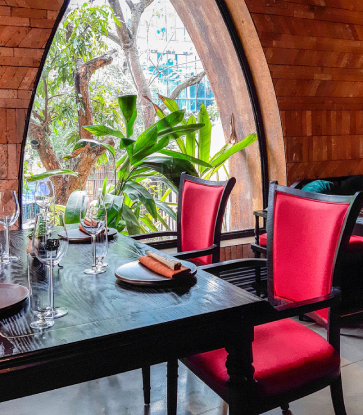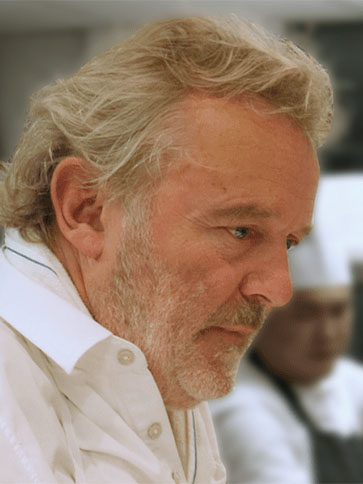It’s easy to imagine the couple are grocery shopping in the organic section of an air-conditioned supermarket. Only, this is a scene increasingly familiar in our local wet markets. Throw in a good amount of elbow jostling and competitive side-eyeing, and it’ll be a complete picture.
To be sure, local wet markets are no longer just touting Asian variations of cabbage and chye sim. In recent years, they have also turned into treasure troves filled with beautiful greens in the form of brussel sprouts and brocollini from Australia, Christmas tree-shaped Romanesco from Europe, and even Portobello mushrooms from Holland.
Many would notice the well-known Springleaf Prata Place when driving along Jalan Tua Kong in the east. But just two doors down is a small wet market, easily missed if you’re not looking. There are just three stalls here, but don’t let its size fool you – Khye Huat Vegetable Store, the market’s sole vendor for greens – is amply stocked with Australian butternut squashes, purple potatoes and vibrant pink radishes from Holland.

“It’s not really because the people coming to shop here are the younger crowd,” shares Ho. “We still get an older crowd, mostly. But I thought of bringing in vegetables from overseas to give my regulars more variety.” Take the butternut squash from Australia. Besides boasting an attractive shade of orange, Ho shares that it is also sweeter and has a nicer texture compared to the ones from Malaysia.
“My older customers might not be able to see the difference between a vegetable from Australia or Malaysia at first, but they will taste the difference and come back.”
As prices for these imported vegetables are higher compared to produce from neighbouring countries, Ho thoughtfully repacks items like radishes and brussel sprouts into smaller packs so customers don’t feel pressured into buying too much at one go.
Over at Tekka Market, owner of Chia’s Vegetable Supplies Victor Chia agrees: “The demographics might not be changing much, but we have to change to keep things attractive.”

It might be easier to pop into a supermarket, bag your vegetables and swipe your credit card, but daring to brave the wet floors and mad crowds has its benefits.
Regulars, for instance, get to dial the vendors’ private lines and request for specific imported produce. Each vendor has their own precious network of suppliers, though majority begin their day as early as 2am at Pasir Panjang Wholesale Centre to make sure they get the best produce for the day. Sometimes, the vendors form a small group and work together to place bulk orders, increasing their chances of getting in what they need.
These vegetable stall-owners are also experts in their field. Says Chia: “We are all selling one thing only, so we know what we are selling very well. For example, the fish guy can tell you all about different fishes; I can tell you about the vegetables.”

Here's what different wet markets have to offer.
Chinatown Complex Market
Look for: Borlotti beans, brussel sprouts from Australia, Portobello mushrooms from Holland, Japanese corn and sweet potatoes.
Jalan Tua Kong Wet Market
Look for: Purple potatoes, beetroots and butternut squash from Australia, radishes from Holland, kale.
Whampoa Wet Market
Look for: Lily bulbs from Hokkaido, and Australian asparagus and broccolini.
Tekka Market
Look for: Purple broccoli, romanesco (when in season), kale, Belgian endives, Spanish tomatoes on the vine.





















